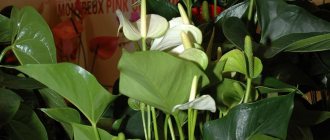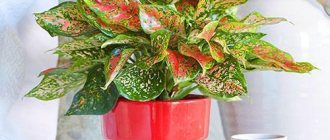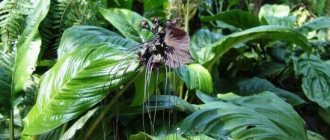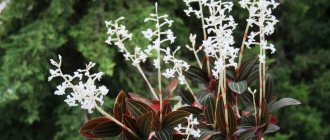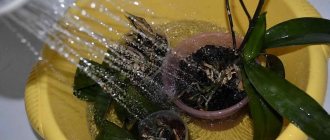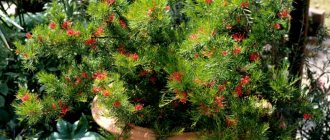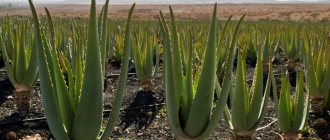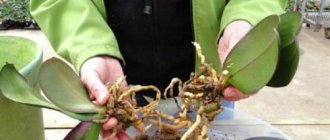Aglaonema is a herbaceous plant from the Araceae family. In nature, representatives of this genus are found in Southeast Asia and the Malay Archipelago. Translated from Greek, the name of the culture is translated as aglaia (shine) and nema (stamen). In natural conditions, it prefers humid plains, tropical forests, and river banks.
Aglaonema is a close relative of Dieffenbachia. It differs only in narrower leaves and smaller sizes. Although aglaonema is not yet often seen as a houseplant, it is considered one of the most suitable for hydroponic growing. In addition, it is able to absorb toxic substances that fill the surrounding air, purifying it.
Types and varieties for growing at home
The genus Aglaonem, according to average estimates, consists of 20-50 species. These are herbaceous crops with erect stems. Some varieties have branched stems. The leaf blades are dense and leathery. Their shape can be different - from ovoid to oblong-lanceolate. On the bottom of the leaf, a depressed vein protrudes in the middle. The color of the leaves may vary depending on the variety. Only some types of aglaonema, mainly hybrid ones, are suitable for home cultivation.
Changeable (commutatum)
The plant is about 0.5-0.7 m high and comes from the Philippines. The leaves are green, covered with silver-beige spots. They can reach 30 cm in length and 10 cm in width.
Popular varieties:
- Silver,
- Queen,
- Maria.
Painted (pictum)
The culture comes from the islands of Borneo and Sumatra, about 60 cm high. The stem is branched. It has large elongated leaves in the shape of an ellipse. There are irregular light grayish spots on the surface.
Popular varieties:
- Silver King,
- Pattaya Beauty,
- Treuba.
Hybrid Valentine has pink-green variegated leaves.
Moderate or modest (modestum)
In the wild it grows on the mountain slopes of the tropical forests of Indochina and the Malay Archipelago. The stems are branched, about 40-50 cm high. The leaf blades are oval, pointed towards the apex, and have several protruding veins on the side of the central vein.
Shiny (nitidum)
The plant is about 1 m high, common in Thailand, Sumatra and Kalimantan. The leaves are bright green, about 0.45 m long, with a shiny, glossy surface.
Ribbed (costatum)
Low-growing herbaceous shrub with branched stems at the base. The leaves are ovoid, 20 cm long and 10 cm wide. Their structure is dense, green in color with white spots on the surface.
Curly (roebelinii)
Shrub with strongly branching stems. The leaves are elliptical, about 30 cm long. The surface is silvery-gray.
Today, with the help of selection, more and more new varieties are being developed that have a variety of leaf colors.
Description
Aglaonema (Aglaonema), native to the tropics of Eastern India, as well as the islands of the Malay Archipelago, is related to a plant such as Dieffenbachia and belongs to the aroid family (Araceae). It cannot be said that aglaonema is a particularly common houseplant among flower growers, but in vain, because its appearance and beneficial properties make it quite attractive.
In the countries of Southeast Asia, aglaonema was given the proud title of the flower of good luck. All because in 1986, a Malaysian was lucky enough to see the numbers on the foliage of a plant, which he wrote down and bought a lottery ticket with the corresponding number, it was a winning ticket.
Aglaonema is a perennial ornamental plant that grows slowly, producing approximately 6 new leaves per year and growing to no more than 70 cm in height. Stems are fleshy, woody at the base.
The foliage is glossy, petiolate, with a base that broadly covers the stem, sometimes lanceolate and oblong, up to 15 cm in length. Depending on the species, and there are about 50 of them (there are about 500 hybrids and varieties), the color of the leaf changes, there are plain, striped and spotted, all types are united by a clearly defined core vein on the leaves.
The plant blooms, but rarely, mainly in the summer, with proper care it can produce an inflorescence-cob wrapped in a blanket; it is covered with unremarkable small flowers and has no decorative value. The fruits of the plant are bright red berries, contain a seed that ripens for 8 months, it is suitable for reproduction.
The sap of the plant is poisonous and dangerous to the mucous membranes.
Home care
Aglaonema's natural habitat is the tropics. Therefore, to grow indoors, the plant needs to be provided with warmth, high humidity and other suitable conditions.
Location and lighting
It is best to purchase the crop in the store in spring or summer. During this period, aglaonema tolerates a change of environment more easily and quickly adapts to a new place of residence. It is advisable to choose young seedlings for cultivation.
It is important to immediately determine the place where the flowerpot will stand. Partial shade is preferable for him. The plant is shade-tolerant and does not react well to the scorching sun. But some aglaonemas need diffused light so that their leaves do not lose their decorative effect. To understand exactly how much light a plant needs, you need to focus on the colors of the leaves. If they are dark green, it is better to place the flowerpot in partial shade. Leaves with variegated colors require more light.
Choosing a flowerpot
The container for planting the crop must match its size. It is recommended to take a flowerpot that will be a little cramped for the aglaonema. If there is too much space around, the plant will grow roots. As a result, the crown will develop slowly, and splendor will have to wait a long time.
It is better to give preference to clay and ceramic pots. They have good air permeability and do not retain moisture. Also, such containers are heavier than plastic ones. The flowerpot will not overturn under the weight of the stems.
Soil and drainage
Aglaonema requires soil that can drain moisture and air well. You can buy ready-made substrate for violets or azaleas. If you prepare the mixture yourself, you need to take 2 parts of leaf soil, 1 part each of peat and sand. The crop grows well in hydroponics - growing without soil in a nutrient solution.
There must be drainage at the bottom of the pot (expanded clay, broken brick). It will help avoid stagnation of water in the soil.
Planting and transplanting
Young aglaonemas grow quickly. Therefore, it is recommended to transplant them into a new container once a year, preferably in the spring. Adult specimens need transplants less often - once every 3-4 years. But every year they need to renew the top layer of soil, replacing it with more nutritious soil.
Transplant procedure:
- Pour a 2-3 cm thick layer of drainage into the pot. Fill it halfway with soil.
- Water the plant well and remove it from the old pot.
- Place the aglaonema in the center of the new container, carefully straighten the roots, and shake the soil.
- Fill the pot with soil up to the root neck. Do not let soil get on the sockets.
- Moisten the soil and place the pot in a semi-shaded place or under diffused lighting.
Step-by-step visual video - instructions for transplanting aglaonema:
Temperature
During the active growing season, the plant should be kept at a temperature of +20-25 degrees.
In winter it can be lowered to +16..18°C. Warning! Sudden temperature changes and drafts should not be allowed. Aglaonema can die from this.
Watering and humidity
In the warm season, when active growth is underway, the plant needs to be watered daily. But do not over-moisten the soil to avoid rotting of the root system. In autumn and winter, watering is reduced. The top layer of the substrate must dry out. Use soft warm water +27-30 degrees.
Aglaneoma needs high humidity. To maintain it, in summer the leaves are sprayed daily with a spray bottle. In winter, if the temperature is low, spraying is carried out sparingly. You can increase the humidity by placing the flowerpot on a tray with wet expanded clay or sphagnum. Sometimes you can bathe the plant under a warm shower.
Feeding and fertilizers
The crop needs to be fed from March to October. It is recommended to alternate the use of mineral and organic fertilizers. The frequency of feeding is once every 2 weeks. Compositions with a high nitrogen content are more suitable for the development of green mass. Lime fertilizers are best avoided. In cloudy weather, in addition to applying to the soil, you can use spraying with weak fertilizer solutions.
Good feeding:
- Agricola;
- Fantasy;
- Effecton.
When the autumn cold sets in outside, you should stop feeding and give the plant a rest.
Flowering and dormant period
In indoor conditions, aglaneoma blooms very rarely. This happens in June-August. Inflorescences form in the axils of the leaves. These are cobs wrapped in a petal that resembles a blanket. The cob can be of different shapes and lengths, depending on the type of crop. After flowering, white, red or orange fruits appear, similar to dogwood, which are very poisonous.
In winter, the plant needs rest. All processes slow down. From October to February, you should stop feeding, reduce watering, and move the flowerpot to a cooler place.
Trimming
In spring or early summer it is recommended to rejuvenate the bush. Pruning is carried out when the plant sheds its lower leaves. It is necessary to remove the upper segments and treat the cut areas with activated carbon. This procedure promotes the formation of young shoots. Trimmings can be used to propagate aglaonema.
What kind of soil does the flower like?
Aglaonema loves light and nutritious leafy soil; in hard soil it is difficult for it to form children. To grow a flower, you can use two soil options:
- A mixture of store-bought substrates: for decorative foliage plants and for orchids. The first soil mixture is too loose and tends to cake, which is not very good for aglaonema. But if you dilute it with the same amount of substrate for orchids, you get the best soil option for aroids.
- For those gardeners who prefer to prepare the soil mixture themselves, it is necessary to prepare and mix humus and leaf soil in equal parts, add about a third of river sand, as well as a little charcoal and bark.
Reproduction methods
The culture can be propagated in several ways. Most often they use cuttings or dividing the bush, less often - propagation by seeds.
Cuttings
Cut a cutting from a well-developed stem at a height of 2-3 cm from the ground. Divide it into several parts about 5 cm long, remove the foliage. Deepen the cuttings halfway for rooting in a mixture of peat and sand (1:1). Cover the container with film. Keep at a temperature of +22-26 degrees. The cutting will take root within a few weeks.
You can place the shoot in water, after soaking it in a solution that stimulates root formation. When the cuttings take root, they are transplanted into separate pots in suitable soil. The lateral shoots must be removed.
Dividing the bush
Dividing the bush can be done during plant transplantation:
- Carefully remove the bush from the pot and shake off the soil.
- Remove dry and damaged parts of the root with a clean tool.
- Divide the plant or cut it vertically down through the roots.
- Treat the cut areas with ash.
- Transplant each division into a separate pot and water well.
Seeds
Aglaonema is a self-pollinating plant. You can collect the seeds yourself if you manage to wait for fruiting at home. Before planting, remove the seeds from the fruits, wash them and dry them. Deepen into moistened sphagnum moss by 1.5 cm. Cover the container with film and germinate the seeds at a temperature of +20-26°C. Shoots will appear in 3-4 weeks. Sometimes this happens later. Remove the film from time to time to ventilate and control the humidity of the substrate. After the formation of a leaf rosette, the seedlings can be planted in separate pots with suitable soil.
Trimming / Support / Garter
In some species and varieties of aglaonema, compact bushes grow a tall vertical stem after a few years. In this case, it is necessary to tie the plant to a support.
It is recommended to prune old shoots
It is recommended to cut off old shoots of plants, and the sections must be treated with crushed coal. If regular pruning is not carried out, plants can stretch up to 1 m or more, and they lose their decorative appearance.
Old plants that have become significantly elongated and can no longer grow without support need to be renewed periodically. This also applies to specimens whose trunks have become very bare and have lost their decorative properties. Complete renewal of the plant is possible thanks to its radical pruning.
Radical pruning is carried out in early spring. It involves removing the top of the stem from very tall old plants. Cut it 15 cm below the remaining leaves on the trunk. It is then rooted in water and planted in a separate pot to form a young plant.
The lower part of the aglaonema should not be thrown away. The cut on the trunk is sprinkled with activated carbon, and the lower part of the trunk is continued to be cared for as if it were an adult flower. Soon new shoots appear from the dormant buds on the trunk.
Features of seasonal care
Aglaonema goes through several development phases throughout the year. There are periods of active vegetation and dormancy. Based on this, seasonal care should be adjusted.
Spring-summer period:
- temperature +22-25 degrees;
- abundant watering;
- frequent spraying;
- feeding once every 2 weeks.
Autumn-winter period:
- temperature about 16-18 degrees;
- moderate watering;
- lack of fertilizing.
Feeding
Not the most capricious, but still demanding plant is aglaonema. Caring for it at home involves timely application of fertilizers. And here the “once every six months” option is not suitable; you need to fertilize correctly and consistently.
- As soon as the first spring sun appears on the street, and this happens from mid-March until the end, you need to start applying fertilizer.
- The first step is to feed the aglaonema with mineral fertilizers.
- After two weeks, apply nitrogen fertilizer.
- In another two weeks, organics.
You need to alternate this way until the end of September. But nitrogen fertilizers should subsequently be included in mineral fertilizers in small quantities. That is, mineral and organic fertilizers alternate.
As for winter and late autumn, during this period the plant will doze off, and it simply does not need extra feeding.
Care errors and their elimination
Frequently encountered problems when growing aglaonema and ways to solve them:
| Problem | Causes | Solution |
| Wrinkling and drying of leaves | Dry air, drafts, dense soil | Spray the plant more often, replant it in loose soil that allows moisture to pass through well. |
| Loss of foliage brightness | Lack of lighting, lack of nutrients | Move the flowerpot under diffused light, regularly fertilize during the growing season |
| Yellowing of lower leaves | Soil waterlogging, high pH | Water moderately so that the water does not stagnate in the pan, transplant into soil with suitable acidity |
| Wilting leaves | Cold air, drafts | Do not allow the room temperature to drop below +16 degrees, avoid drafts and sudden temperature changes |
Temperature
As already mentioned, the Crete variety takes root well and grows in a wide variety of conditions. The rest are heat-loving creatures, and they react painfully to any temperature changes. The plant also does not like the presence of drafts; they can destroy aglaonema. Caring for this beauty at home involves constant monitoring of the ambient temperature.
- In summer, the plant feels great at 20-26 degrees above zero.
- In winter, try not to allow the room to cool below +15 degrees.
Maintaining this temperature at home is quite easy. If you have heating problems, be sure to install a heater in the room.
Diseases and pests, control methods
Aglaonema, if agricultural practices are violated, can be susceptible to diseases and pest invasions. If the plant is watered abundantly and the room is cold enough, it may be affected by gray rot. To get rid of it, you should cut off all damaged parts. Transplant the plant into a new pot and increase the air temperature.
Aglaonema pests:
- mealybug;
- spider mite
The vital activity of insects leads to gradual withering of the plant, drying out and falling of leaves, and cessation of growth. If action is not taken in time, it will die.
Effective pest control is only possible with the use of insecticides:
- Aktellik;
- Aktara;
- Intavir and others.
Transfer
Aglaonema grows slowly. For full growth and splendor of the bush, tightness is extremely necessary, which is as close as possible to natural conditions. Taking this into account, adult specimens are replanted no more than once every four or even five years. Young plants are replanted every year.
When drawing up the timing of the procedure, they are guided not only by the age of the flower. You should also pay attention to the condition of the earthen coma. The more strongly it is entwined with roots, the faster the time for transplantation will come. Optimal seasons are spring or summer.
The root system of the plant is fibrous and superficial. This means that a deep pot cannot be used. It is better to choose a wide and shallow option. In general, when determining the volume, it is taken into account that a quarter of it is allocated for drainage.
Important to remember! Newly acquired Aglaonema should not be replanted earlier than after two or three weeks.
Interesting! It is practiced to grow Aglaonema without any soil at all. A special nutrient solution is sufficient.
Aglaonema in the house: benefits and harm
This crop is grown at home for its decorative leaves. With proper care, aglaonema releases phytoncides. These are substances that help clean the air of toxic substances and pathogens. Feng Shui philosophy relates this culture to the element of Wood. It is recommended to keep it on the eastern side of the house to replenish vitality, increase efficiency, and combat stress.
But aglaonema also has negative sides. Like many Araceae, it contains poisonous sap. Therefore, if you handle the plant carelessly, you can get skin irritation. The fruits are especially poisonous. They are strictly forbidden to eat. You should be careful if there are children in the house who might accidentally eat the bright berries.
Aglaonema is an evergreen plant that, unfortunately, is not often found on the windowsills of houses. Thanks to its beautiful decorative foliage and simple care rules, the culture is gradually gaining popularity and becoming a favorite of flower growers.
Aglaonema is a wonderful plant both for a sunny windowsill and for the depths of a room. Grows well in artificial light. It is easy to care for, rarely requires replanting, and does not require spraying. More useful information about the features of growing crops can be found in the following video:
What are the consequences of low air humidity for plants?
Some people are skeptical about little things like air humidity. For people, low humidity is fraught with a runny nose, sore throat, and dry skin. Plants suffer from this no less!
Aglaonema came to us from humid forests, and it will not be able to grow here normally if the conditions do not at least approximately resemble natural ones. If the humidity is low, then don’t expect your beautiful aglaonema to grow. Caring for this crop at home involves artificial air humidification. If the norm is not reached, the plant will begin to suffer, and you will notice it. Signs:
- Modified leaves - they will begin to deform.
- Growth will become slow and the plant will begin to shrink.
- The edges of the foliage soon begin to dry out and curl.
- The leaves will begin to fade and then fall off.
- The decorative appearance of aglaonema will be completely ruined and the plant will die.
